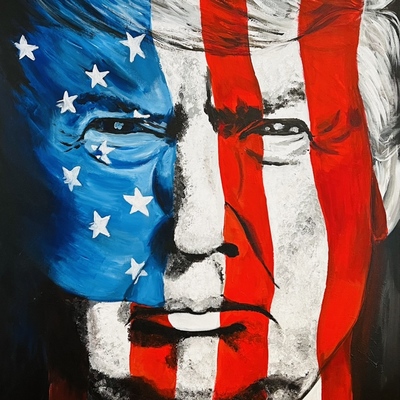
US and EU Reach Last-Minute Trade Deal With 15% Tariffs and Major Investment Requirements
Atlantic Pivot: How the 15% Solution Rewrites Global Trade Rules
A last-minute US-EU agreement averts trade war but fundamentally shifts economic power across the Atlantic, creating winners and losers that markets haven't fully recognized
The handshake between Donald Trump and Ursula von der Leyen at a Scottish golf course yesterday wasn't just for show. Their hastily arranged meeting produced a game-changing trade framework: 15% tariffs on most EU exports to America, while requiring Brussels to purchase $750 billion in US energy and invest $600 billion domestically over three years. This deal doesn't just tweak transatlantic commerce—it completely rewrites the rules.
Coming just days before Trump's threatened 30% tariff deadline, the agreement represents the largest bilateral trade restructuring since NAFTA. But don't be fooled by the relief rally in European markets. What we're witnessing isn't a return to free trade, but rather managed trade on an unprecedented scale.

Breaking Down the Deal
The 15% baseline tariff covers automobiles, semiconductors, pharmaceuticals, and most other EU goods, while steel and aluminum face a steeper 50% rate. Several sectors won exemptions: aircraft and components, specific chemicals, generic pharmaceuticals, semiconductor manufacturing equipment, and select agricultural products will enter tariff-free.
These carve-outs reveal strategic priorities. European automakers see tariffs drop from 25% to 15%—an immediate cost relief. But look closer at the semiconductor equipment exemption. EU chipmakers like Infineon and STMicroelectronics will likely boost purchases of American manufacturing tools, effectively channeling European capital toward US suppliers like Applied Materials and Lam Research.
The energy component deserves special attention. By committing to purchase $750 billion in US energy over three years, Europe is essentially locking itself into American LNG dependence through 2028. This constrains Brussels' climate transition plans and weakens its negotiating position with alternative suppliers in Qatar and Russia.
The True Cost: Beyond Market Celebrations
European markets initially cheered the deal as crisis averted, but this misses the bigger picture. Consider the math: Germany alone imports roughly €60 billion annually in goods now subject to the 15% tariff—a €9 billion yearly tax that simply didn't exist six months ago. As Irish Prime Minister Micheál Martin candidly acknowledged, "There will now be higher tariffs than before, making trade between the EU and the US more expensive and challenging."
Even more significant are the investment commitments. The combined $1.35 trillion in energy purchases and US investments equals about 1% of EU GDP annually—a substantial economic drag that European leaders have barely mentioned publicly.
One Brussels-based trade analyst, speaking anonymously, cut to the chase: this framework is "a wealth transfer mechanism disguised as a trade deal." Unlike traditional agreements that lower barriers on both sides, this arrangement extracts specific financial commitments from Europe while maintaining American protectionism in key sectors.
Who Stands to Gain?
The sectoral exemptions create clear winners that savvy investors should note. US defense contractors are poised for substantial gains from undisclosed European military procurement commitments. Trump mentioned "vast amounts" of American weapons in the EU purchase agreements, suggesting a multi-billion-dollar windfall for contractors already working at capacity.
American energy infrastructure companies are another obvious beneficiary. The $250 billion annual LNG commitment exceeds current US export capacity, necessitating rapid project development along the Gulf Coast. This creates three years of guaranteed revenue that transforms the economics for LNG terminals and midstream operators.
For European automakers, despite initial optimism, the reality is more complex. While tariffs drop from 25% to 15%, the new rate remains six times higher than historical norms. German manufacturers will likely accelerate US production investment to sidestep the tariff entirely, potentially reducing high-value manufacturing jobs in Baden-Württemberg and Bavaria.
A Template for Future Deals
This agreement mirrors Trump's recent Japan framework, which also imposed 15% tariffs, suggesting a pattern for future arrangements. Washington is systematically abandoning multilateral trade rules in favor of bilateral leverage.
The implications for global commerce are profound. If the 15% rate becomes the new baseline for major economies, the World Trade Organization's most-favored-nation principle effectively collapses. With the US importing $605 billion worth of EU goods in 2024—surpassing Mexico, Canada and China—this framework becomes a blueprint for reshaping global trade flows.
China faces particular pressure as the next major negotiation target. Beijing lacks Europe's institutional constraints and military alliance dependencies but wields greater retaliatory power. The 90-day extension of US-China trade talks, announced alongside the EU deal, hints at even more complex negotiations ahead.
Investment Opportunities in the New Landscape
This agreement creates specific opportunities for informed positioning. US semiconductor equipment manufacturers benefit immediately from the zero-tariff designation while European chip demand remains strong. Applied Materials and Lam Research should see orders accelerate as EU fabs avoid tariff exposure on American tools.
Energy infrastructure offers compelling multi-year visibility. Cheniere Energy and other LNG exporters now have essentially guaranteed European demand through 2028, reducing commodity price risk and improving cash flow predictability.
European automakers require more nuanced analysis. Stellantis, with significant North American manufacturing, faces minimal tariff exposure compared to pure European producers. BMW and Mercedes-Benz will likely announce expanded US production within months to offset ongoing tariff costs.
Currency implications remain underappreciated. Higher EU import costs combined with mandated dollar-denominated energy purchases create sustained euro weakness. The investment commitment requires European companies to deploy capital in dollar assets, putting additional downward pressure on EUR/USD.
Looking Forward
Some critical details remain unresolved, including tariff rates on spirits and the timeline for steel and aluminum quota discussions. The framework requires ratification by all 27 EU member states, potentially delaying implementation.
More fundamentally, this agreement institutionalizes managed trade rather than restoring free trade. The 15% rate isn't a temporary disruption but a new baseline that other major economies will likely face in future negotiations.
Markets celebrating Europe's "victory" in avoiding 30% tariffs are missing the bigger transformation. This deal doesn't restore the previous trade relationship—it creates an entirely new one where economic relationships increasingly reflect political power rather than comparative advantage.
For investors, the message is clear: position for a world where bilateral agreements trump multilateral rules, where investment flows follow political relationships, and where tariffs become permanent features rather than temporary tools. The handshake in Scotland didn't just avert a trade war—it established a new form of economic diplomacy that will shape global commerce for years to come.
Investment Disclaimer: This analysis represents informed commentary based on current market data and established economic patterns. Past performance does not guarantee future results. Readers should consult qualified financial advisors before making investment decisions.